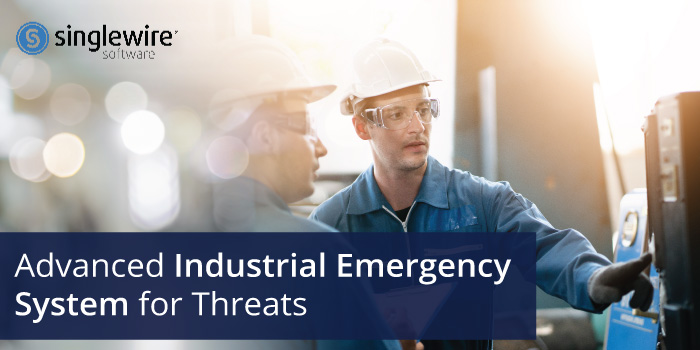The Importance of an Industrial Emergency System
In the dynamic landscape of industrial operations, staying ahead of potential threats is crucial to ensuring the safety of employees and the uninterrupted flow of business activities. An industrial emergency system plays a pivotal role in mitigating disruptions and minimizing downtime caused by unforeseen emergencies. These systems provide instant notice in the event of an emergency, ensuring that officials can promptly inform everyone in the facility. The ability to communicate rapidly and effectively is essential for an efficient emergency response plan. In this post, we will delve into the significance of these systems, how they can provide a competitive edge in addressing potential threats, and emphasize the importance of staying proactive and implementing automated notifications for swift responses.
Understanding Relevant Threats
An industrial emergency system can help organizations gain an edge on potential threats, but only if they understand what those threats are. Gathering key stakeholders to discuss disruptions and risks can help provide a comprehensive view of the threats that can derail an organization. From severe weather that impacts production and shifts to a violent intruder that is looking to harm workers, creating a list of threats helps organizations begin planning how they will inform others and respond. That information can be invaluable when trying to mitigate the impact of a crisis event with an industrial emergency system.
Automated Notifications for Quick Responses
Automated notifications are one of the key features of a reliable industrial emergency system. In the face of potential threats, time is of the essence, and manual communication methods may not suffice. Automated notifications can deliver instant alerts as text, audio, and visuals. This multifaceted approach ensures that crucial information reaches every individual in an industrial facility promptly.
By automating the notification process, industrial enterprises can reduce response time significantly, allowing for quicker decision-making and implementation of necessary safety measures. Whether it is a machinery malfunction, a chemical spill, or any other emergency, swift communication is the first line of defense against potential threats.
Integration Capabilities for Comprehensive Alerting
For an industrial emergency system to be truly effective, it must seamlessly integrate with the existing technological infrastructure of the industrial facility. This includes integration with equipment monitoring systems, surveillance cameras, and other relevant technologies that can help detect threats as well as speakers, strobes, digital signage, desk phones, and desktop computers that can relay pertinent safety information. Flexible and wide-ranging integration capabilities ensure that the emergency system leverages the full potential of the existing resources, enhancing overall security and communication.
PSAP Connectivity
Connecting with Public Safety Answering Points (PSAPs) is crucial for an industrial emergency system. In case of a significant emergency, timely communication with authorities can make a substantial difference. Ensuring that the emergency system can seamlessly connect with PSAPs facilitates a coordinated and swift response from external emergency services.
Initiating a Industrial Emergency System
A proactive approach to emergency preparedness is crucial in industrial settings. An industrial emergency system, equipped with automated notifications, comprehensive alerting capabilities, integration features, advanced threat detection, and seamless connectivity with PSAPs, can provide industries with the edge they need to stay ahead of potential threats. By investing in such systems, industrial enterprises can not only enhance the safety of their employees but also fortify the resilience of their operations in the face of unforeseen emergencies.
For more information on how our InformaCast software can be used as an industrial emergency system, visit our Manufacturing page.
